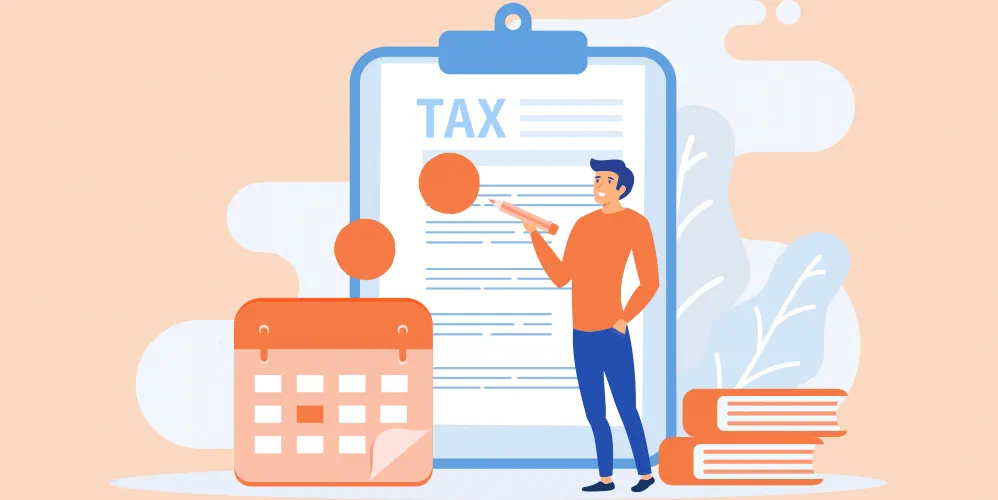
How to Transfer Shares from One Demat Account to Another?
24 Aug 2023

Table of Content
-
What is Transfer of Shares?
-
Reasons behind the Transfer of Shares from One Demat Account to Another
-
How to Transfer Shares from One Demat Account to Another?
-
Participants in the Transfer of Shares
-
Time Required for Transfer of Shares
-
What are the Tax Implications of Transferring Shares?
-
Things to Keep in Mind while Transferring Shares
-
Conclusion
If you are an active investor, you might have wondered ‘Can I transfer shares from one demat account to another? The answer is yes! When you sell securities, you give your shares to another person. However, if you hold multiple demat accounts, then you can transfer your shares from one demat account to another demat account.
Transferring shares from one demat account to another has become a common practice. Whether you have changed brokers, consolidated your investments, or gifted shares to family members, knowing how to transfer shares is essential for investors. Let us understand what transfer of shares means and how to transfer shares from one demat account to another.
What is Transfer of Shares?
Transferring shares refers to the process of moving securities from one demat account to another. In India, shares are held in an electronic format through a Dematerialised (demat) account, which eliminates the need for physical share certificates. Before we see how to transfer demat account shares, let us examine some of the prominent reasons for the same.
Reasons behind the Transfer of Shares from One Demat Account to Another
There can be several reasons that can prompt investors to transfer shares between demat accounts. These can include the following:
- Switching brokers or depository participants (DPs) due to better services or lower brokerage charges.
- Consolidating investments from multiple demat accounts into a single account for better portfolio management.
- Transferring shares as a gift or inheritance to family members or loved ones.
- Transferring shares to a new demat account when relocating or changing residence.
How to Transfer Shares from One Demat Account to Another?
One can transfer shares from one demat account to another either through a manual method or online mode. Note that there is a proper process to transfer shares from one demat to another. However, the instructions regarding how to transfer physical shares to a demat account are different.
Manual Transfer of Shares
Follow these steps to manually transfer your shares from demat account to another:
- The transferor needs to obtain the Delivery Instruction Slip (DIS) from the current stockbroker. The slip contains all the essential information relating to the transfer of shares. The transferor shall fill in all the necessary details for transferring the security.
- The transferor shall mention the Beneficiary Broker ID on the DIS. The ID should be provided for both the existing broker and the new broker. It is a 16-digit unique ID allotted to the broker or the bank.
- Then, the transferor shall mention the International Securities Identification Number (ISIN). This number helps in the identification of the individual shares in the demat account. The transferor shall also mention the number of shares along with the ISIN.
- The transferor shall select the off-market mode of transfer in case of intra-depository transfer. In other cases, the transferor shall select the inter-depository option.
- After filling in all the relevant information, the transferor shall sign the document and submit it to the existing broker. The broker will charge a nominal fee for transferring your shares. These charges may vary across different brokers.
Online Transfer of Shares from One Demat Account to Another
Online transfer of shares is a convenient method and one can do it at the convenience of his home. You can undertake the online transfer of shares either through CDSL’s ‘Easiest’ facility or NSDL’s ‘Speed-e’ facility. Following are the steps involved in transferring shares from one demat account to another:
- Visit the CDSL or NSDL website. Register for the ‘Easiest’ facility or ‘Speed-e’ facility. Fill in all the relevant details and submit the form.
- Send a copy of the form to your depository participant. The depository participant will further send it to the Central Depository.
- Your details will be verified and you will receive your login credentials after 1-2 days.
- Login using the credentials received by you. Now, you can transfer your shares online from your demat account.
Also check - How to Open Demat Account Online in Easy Steps
Participants in the Transfer of Shares
While we discussed how can we transfer shares from one demat account to another, we also need to know the participants involved in this transaction. The primary participants involved in transferring shares from one demat account to another are:
- Transferor: The current owner of the shares who will be initiating the transfer.
- Transferee: The new owner who will be receiving the shares.
- Depository Participants (DPs): Entities registered with the depository (NSDL or CDSL) that provides demat account services.
- Depositories: National Securities Depository Limited (NSDL) and Central Depository Services Limited (CDSL) hold and maintain your securities in dematerialised form.
Time Required for Transfer of Shares
The time required for transferring your shares from one demat account to another varies depending on the transfer method and the efficiency of the DPs involved. In manual transfers, the process may take several weeks to complete. Online transfers are generally faster, with the shares usually reflected in the new demat account within a few days. More often than not, the entire process gets completed within one week.
What are The Tax Implications of Transferring Shares?
If one transfers shares from one demat account to his/her another demat account, then it is considered a non-taxable event. But, if the shares are transferred to the demat account of another person, then it can invite tax implications. Transfers done without consideration should be treated as gifts and shall be taxed accordingly as per the provisions of the Income Tax Act, 1961. The transferor and the transferee should take appropriate legal advice before undertaking such transfer.
Things to Keep in Mind While Transferring Shares
When transferring shares between demat accounts, it is essential to consider the following points:
- Choose a reliable and reputable DP for the new demat account.
- Verify the accuracy of details such as ISIN, DP ID, client ID, and beneficiary account numbers.
- Maintain records of the transfer deed, share certificates, and other relevant documents.
- Keep track of the transfer process and follow up with the DPs if there are any delays or issues.
- Consult a tax advisor or chartered accountant to understand the tax implications of the transfer and comply with reporting requirements.
Also Check - What is the use of Demat Account and How to use it?
Conclusion
The process to transfer shares from one demat to another in India can be done through manual or online methods. While manual transfers involve physical paperwork and longer processing times, online transfers offer convenience and faster completion. Understanding the process, participants, timeframes, and tax implications associated with share transfers is crucial for investors to ensure a smooth and hassle-free transfer of ownership.
If you are wondering how to transfer a demat account from one broker to another, then it is not possible. If you are a broker who wants a new demat account, you will have to open a separate account while closing the previous one. You cannot use another broker's demat account.
The demat services by the Bank of Baroda provide smooth and hassle-free transactions. They are preferred among investors and traders due to lower charges, security and excellent services. Open your demat account now with the Bank of Baroda.
Popular Articles
Related Articles










-
Disclaimer
The contents of this article/infographic/picture/video are meant solely for information purposes and do not necessarily reflect the views of Bank of Baroda. The contents are generic in nature and for informational purposes only. It is not a substitute for specific advice in your own circumstances. Bank of Baroda and/ or its Affiliates and its subsidiaries make no representation as to the accuracy; completeness or reliability of any information contained herein or otherwise provided and hereby disclaim any liability with regard to the same. The information is subject to updation, completion, revision, verification and amendment and the same may change materially. The information is not intended for distribution or use by any person in any jurisdiction where such distribution or use would be contrary to law or regulation or would subject Bank of Baroda or its affiliates to any licensing or registration requirements. Bank of Baroda shall not be responsible for any direct/indirect loss or liability incurred by the reader for taking any financial decisions based on the contents and information mentioned. Please consult your financial advisor before making any financial decision.
How To Open Demat Account?
A Demat account (Dematerialised account) is necessary to be able to trade or invest in stocks online. Demat accounts hold the securities and other assets traded on stock markets.
Different Types of Demat Account
Different types of specific demat account are suitable for different types of investors. Resident Indians use regular demat accounts while non-resident Indians can choose between repatriable demat accounts and non-repatriable demat accounts.

